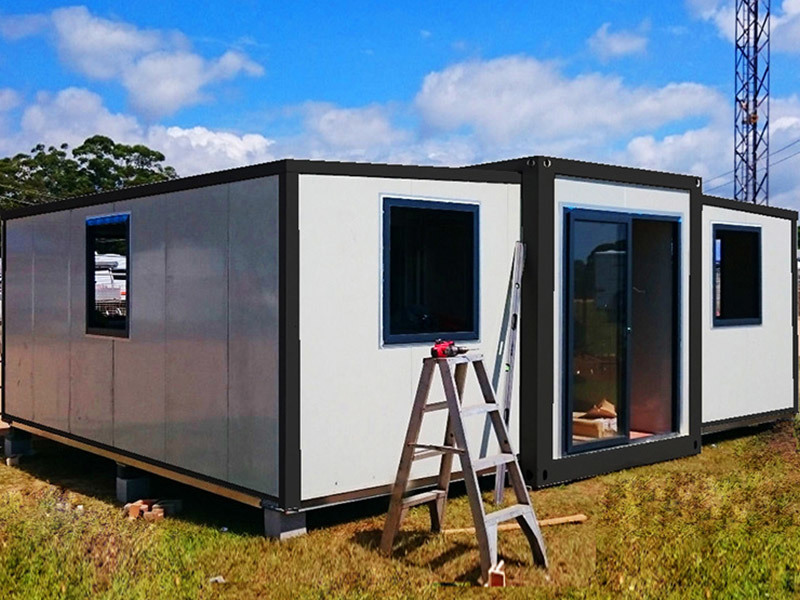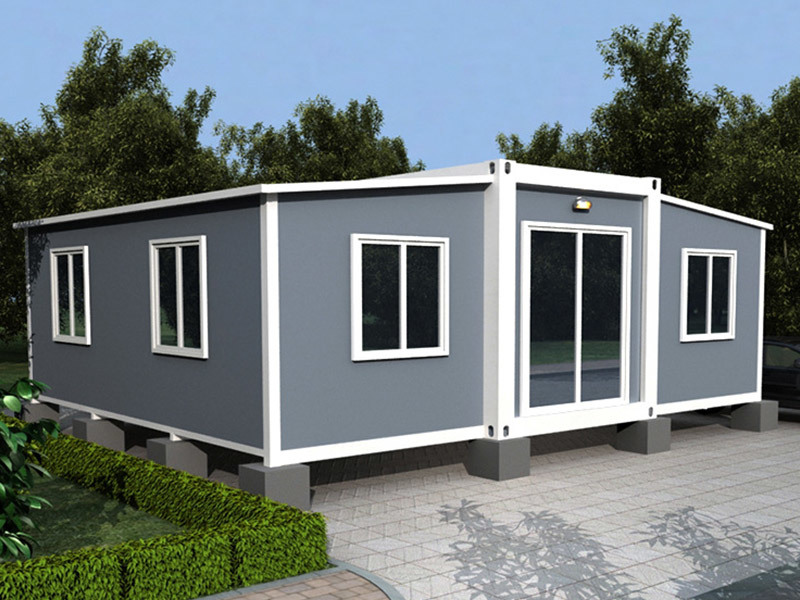Committed To Providing Customers With One-Stop Integrated Housing Solutions
The Future of Housing: Why Foldable Tiny Homes Are Gaining Popularity
Oct 25,2025

The Future of Housing: Why Foldable Tiny Homes Are Gaining Popularity
Table of Contents
1. Introduction to Foldable Tiny Homes
2. The Rise in Popularity of Tiny Homes
2.1 Changing Attitudes Toward Minimalism
2.2 Environmental Concerns and Sustainability
3. Benefits of Foldable Tiny Homes
3.1 Cost-Effective Living Solutions
3.2 Mobility and Flexibility
3.3 Customization Options
4. The Technology Behind Foldable Tiny Homes
4.1 Innovative Design Features
4.2 Sustainability in Materials and Construction
5. Challenges and Considerations
5.1 Zoning Laws and Regulations
5.2 Space Limitations and Design Challenges
6. The Social Impact of Tiny Living
6.1 Community Living and Shared Spaces
6.2 The New Urban Lifestyle
7. Future Trends in Tiny Home Living
7.1 Integration with Smart Home Technology
7.2 The Role of Foldable Homes in Disaster Relief
8. Conclusion
9. Frequently Asked Questions (FAQs)
1. Introduction to Foldable Tiny Homes
Foldable tiny homes represent an innovative solution to modern housing challenges. These compact living spaces are designed to maximize efficiency while minimizing environmental impact. As the housing market evolves, the demand for more sustainable, affordable, and flexible living conditions grows. Foldable tiny homes cater to this demand, offering a unique blend of functionality and style. In the following sections, we will delve into the factors contributing to the increased popularity of these homes, their benefits, technological advancements, and the social dynamics they foster.
2. The Rise in Popularity of Tiny Homes
The surge in interest surrounding tiny homes, particularly foldable variants, can be attributed to various societal shifts. Understanding these factors helps explain why more individuals are choosing this lifestyle.
2.1 Changing Attitudes Toward Minimalism
As people increasingly seek to declutter their lives, minimalism has become a lifestyle choice. Foldable tiny homes align perfectly with this mindset, encouraging individuals to prioritize experiences over material possessions. Living in a smaller space necessitates thoughtful decision-making about what is truly essential, resulting in a more intentional way of life.
2.2 Environmental Concerns and Sustainability
In today's world, environmental consciousness is essential. Foldable tiny homes typically require fewer resources for construction and maintenance, making them an eco-friendly option. The reduced energy consumption and smaller carbon footprint associated with these homes appeal to eco-conscious consumers, further driving their popularity.
3. Benefits of Foldable Tiny Homes
Foldable tiny homes offer a myriad of benefits that address contemporary housing dilemmas. Here are some of the key advantages:
3.1 Cost-Effective Living Solutions
Affordability is a significant factor influencing the popularity of foldable tiny homes. With rising housing costs, these homes present an attractive alternative. Lower construction costs, reduced utility expenses, and minimal maintenance requirements collectively contribute to significant long-term savings for homeowners.
3.2 Mobility and Flexibility
One of the standout features of foldable tiny homes is their mobility. Homeowners can easily relocate their residences without the hassle of traditional home selling processes. This flexibility is particularly appealing to those who wish to travel or relocate for work while maintaining a stable living environment.
3.3 Customization Options
Unlike traditional homes that often adhere to standardized designs, foldable tiny homes can be customized to fit individual preferences. This personalization fosters a sense of ownership and creativity, allowing homeowners to cultivate unique spaces that reflect their lifestyles and taste.
4. The Technology Behind Foldable Tiny Homes
The evolution of construction technology has played a pivotal role in the rise of foldable tiny homes. Innovative design practices and materials contribute to their functionality and appeal.
4.1 Innovative Design Features
Foldable tiny homes utilize space-efficient designs, incorporating multi-functional furniture and storage solutions. Features such as foldable walls, convertible sofas, and compact kitchens optimize living areas, ensuring that every square foot serves a purpose.
4.2 Sustainability in Materials and Construction
Modern foldable tiny homes often use sustainable materials, such as reclaimed wood, recycled metals, and eco-friendly insulation. These choices not only reduce the environmental impact of construction but also enhance the overall durability of the structures.
5. Challenges and Considerations
While foldable tiny homes present numerous advantages, potential homeowners should also be aware of the challenges associated with this lifestyle.
5.1 Zoning Laws and Regulations
One of the primary hurdles for tiny home enthusiasts is navigating local zoning laws and building regulations. Many areas have stringent requirements that may limit the placement or construction of tiny homes. It’s crucial for prospective homeowners to research local regulations before proceeding with their plans.
5.2 Space Limitations and Design Challenges
Living in a tiny home necessitates thoughtful design and organization. Space limitations can pose challenges regarding storage and functionality. Homeowners must be prepared to adapt their lifestyles to maximize the potential of their compact living spaces.
6. The Social Impact of Tiny Living
The appeal of foldable tiny homes extends beyond individual preferences, shaping broader social dynamics in communities.
6.1 Community Living and Shared Spaces
Many tiny home advocates emphasize community living. Foldable tiny homes can facilitate the creation of intentional communities where individuals share resources, facilitate social connections, and promote collective sustainability efforts.
6.2 The New Urban Lifestyle
As urban areas become increasingly crowded and expensive, foldable tiny homes offer an alternative for city dwellers seeking affordable housing. This trend promotes a reimagined urban lifestyle characterized by reduced consumption, increased mobility, and a stronger sense of community.
7. Future Trends in Tiny Home Living
The future of foldable tiny homes is bright, with various trends emerging that will shape their evolution.
7.1 Integration with Smart Home Technology
As technology continues to advance, we can expect to see more foldable tiny homes equipped with smart home technology. Features such as energy-efficient appliances, remote-controlled lighting, and integrated security systems will enhance convenience and sustainability for homeowners.
7.2 The Role of Foldable Homes in Disaster Relief
Foldable tiny homes are also gaining attention for their potential in disaster relief efforts. Their portability and rapid deployment capabilities make them ideal solutions for temporary housing following natural disasters, providing comfortable shelter for those in need.
8. Conclusion
Foldable tiny homes represent a transformative shift in how we approach housing. With their affordability, sustainability, and innovative design, they address many contemporary challenges while promoting a minimalist lifestyle. As societal values continue to evolve, the appeal of foldable tiny homes is likely to grow, paving the way for a new era of housing that prioritizes flexibility, efficiency, and community. The future of housing is indeed foldable, and it holds exciting possibilities for those willing to embrace this new way of living.
9. Frequently Asked Questions (FAQs)
1. What are foldable tiny homes?
Foldable tiny homes are compact living spaces designed to be easily transported and set up. They maximize space efficiency and often feature innovative designs and sustainable materials.
2. Are foldable tiny homes affordable?
Yes, foldable tiny homes typically have lower construction and maintenance costs compared to traditional homes, making them an attractive option for cost-conscious individuals.
3. Can I customize a foldable tiny home?
Absolutely! Many foldable tiny homes offer customization options, allowing homeowners to personalize their spaces according to their preferences and needs.
4. What challenges do foldable tiny homeowners face?
Some common challenges include navigating local zoning laws, designing for space limitations, and adapting to a minimalist lifestyle.
5. How do foldable tiny homes contribute to sustainability?
Foldable tiny homes utilize fewer resources for construction, consume less energy, and often incorporate eco-friendly materials, reducing their overall carbon footprint.
Hot Tags:
PREVIOUS:
Contact Us
E-mail:
Phone/WhatsApp:
Address:
No. 132 Renmin West Road, Fucheng County, Hengshui City, Hebei Province



